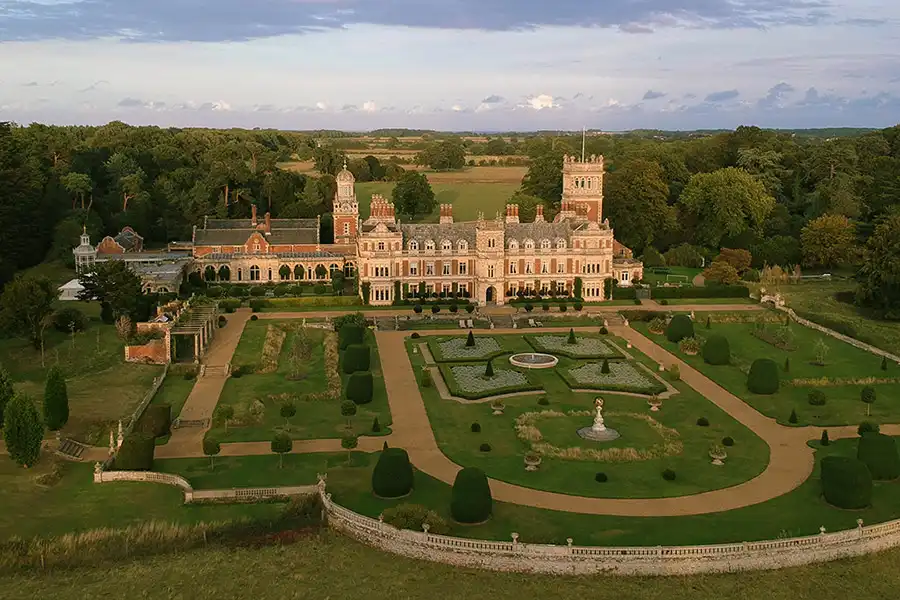
The Somerleyton Hall Maze is located in Suffolk, England. It was built in 1846 and is the work of William Andrew Nesfield, a landscape designer of the Victorian era. It has a history of more than 170 years up to now. The main body of the manor is a Victorian-style mansion. The maze is located on the north side and was once part of the winter garden.

The maze is surrounded by yew hedges, which are about 2 meters high and have thick branches and leaves. The entrance is a tall yew arch, about 3 meters wide. The total length of the passage is approximately 800 yards. It is winding and has several dead ends. On average, tourists can reach the center in 15 minutes, but it often takes longer due to repeated trips. The center is a 3-meter-tall Chinese-style hexagonal wooden tower. The top of the tower is covered with grey tiles and there is no obstruction on all sides. From the top, one can overlook the entire maze.
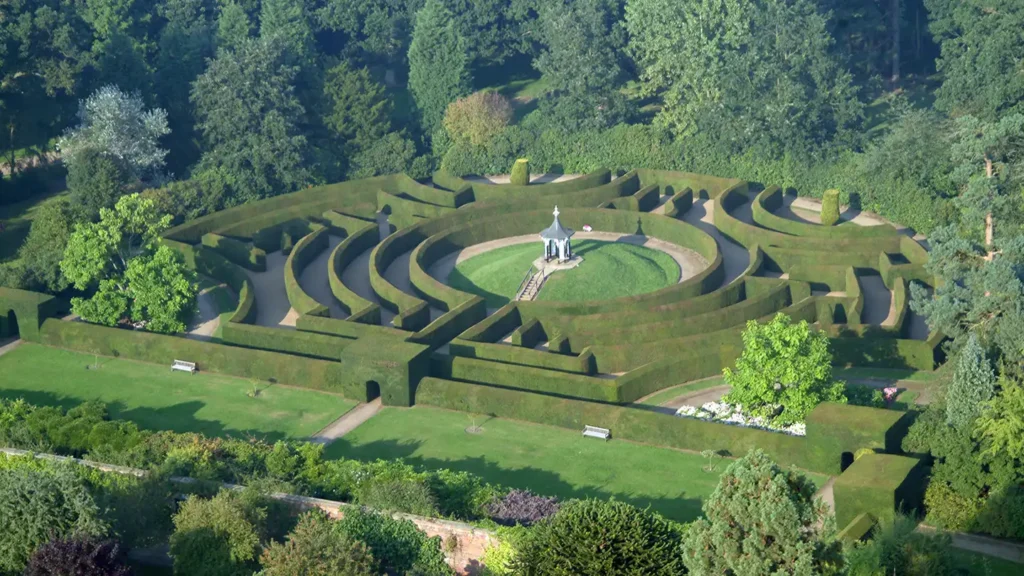
The maze is flat in terrain and the road surface is made of crushed stones and soil. The hedges are neatly trimmed and arc-shaped at the corners. Along the way, one can see the sunlight filtering through the gaps in the hedges and hear the chirping of birds in the distance. It is open from April to November every year, with an additional opening on Wednesdays in summer. According to statistics in 2023, the average daily reception was about 200 people, mostly family tourists. Children like to play hide-and-seek in dead ends.
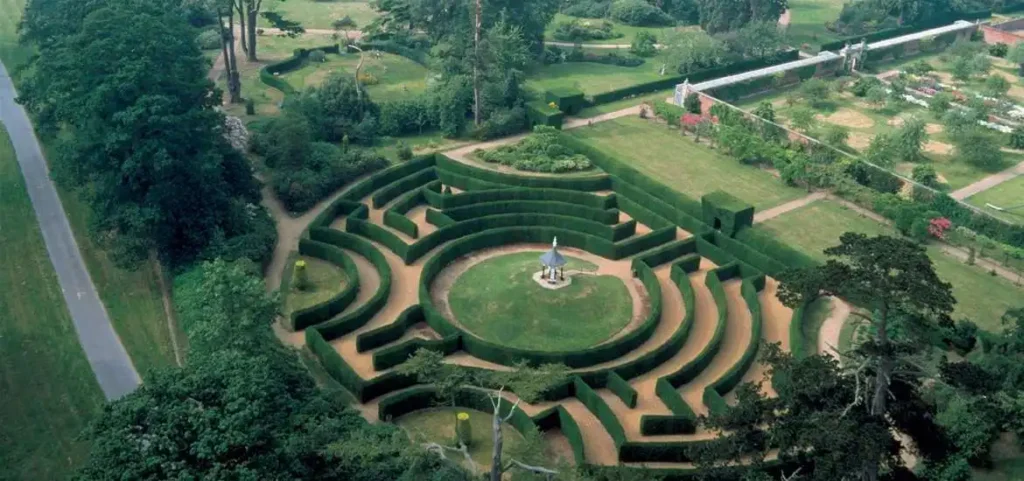
When the manor owner, Sir Samuel Morton Peto, built the maze, it was specially designed for family gatherings. Nowadays, the interior of the mansion is not open to the public, but the maze and the 12-acre garden are free to visit. The yew hedges are pruned twice a year to maintain their original layout from 1846. There are signs in the park reminding: “When lost, walk along the right side and it will take 10 minutes to get out.” However, many people deliberately take a longer route to enjoy the pleasure of exploration.
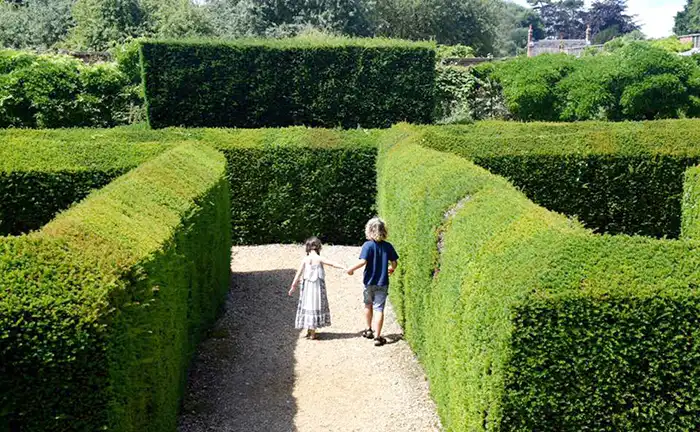
There are no complicated decorations here. Only simple hedges and dirt roads. In spring, the yew tree sprouts new tender branches; in summer, its shadows are mottled; in autumn, its leaves cover the ground; and in winter, the hedges remain green. At every corner, you may encounter a way back. Walk to the wooden tower in the center and tap the copper bell on the tower body. The sound can travel a long distance – this was designed 170 years ago and has remained unchanged to this day.
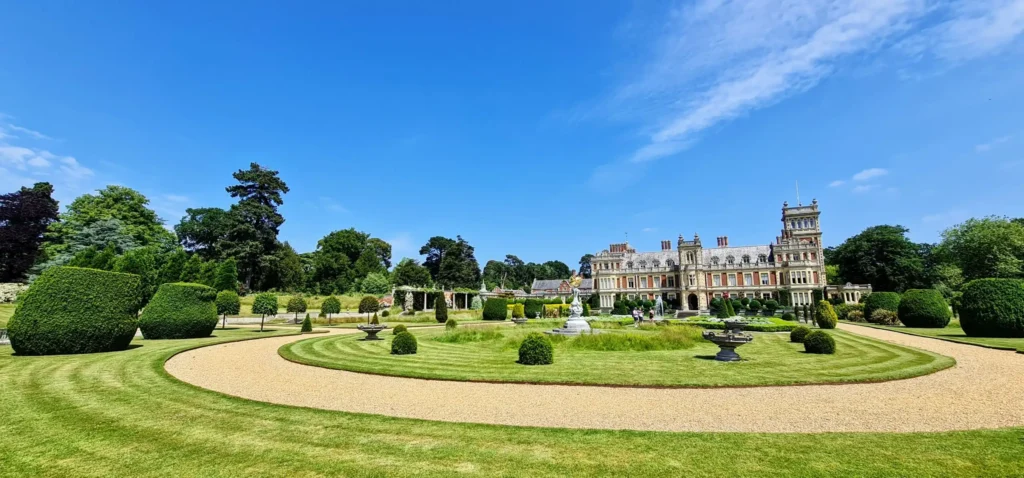
This post is also available in Afrikaans, Azərbaycan dili, Bahasa Indonesia, Bahasa Melayu, Basa Jawa, Bosanski, Català, Cymraeg, Dansk, Deutsch, Eesti, Español, Esperanto, Euskara, Français, Frysk, Galego, Gàidhlig, Hrvatski, Italiano, Kiswahili, Latviešu valoda, Lietuvių kalba, Magyar, Nederlands, O'zbekcha, Polski, Português, Română, Shqip, Slovenčina, Slovenščina, Suomi, Svenska, Tagalog, Tiếng Việt, Türkçe, Íslenska, Čeština, Ελληνικά, Беларуская мова, Български, Кыргызча, Македонски јазик, Монгол, Русский, Српски језик, Татар теле, Українська, Қазақ тілі, Հայերեն, עברית, ئۇيغۇرچە, اردو, العربية, سنڌي, فارسی, كوردی, پښتو, नेपाली, मराठी, हिन्दी, অসমীয়া, বাংলা, ਪੰਜਾਬੀ, ગુજરાતી, தமிழ், తెలుగు, ಕನ್ನಡ, മലയാളം, සිංහල, ไทย, ພາສາລາວ, ဗမာစာ, ქართული, አማርኛ, ភាសាខ្មែរ, 日本語, 简体中文, 繁体中文 and 한국어.
